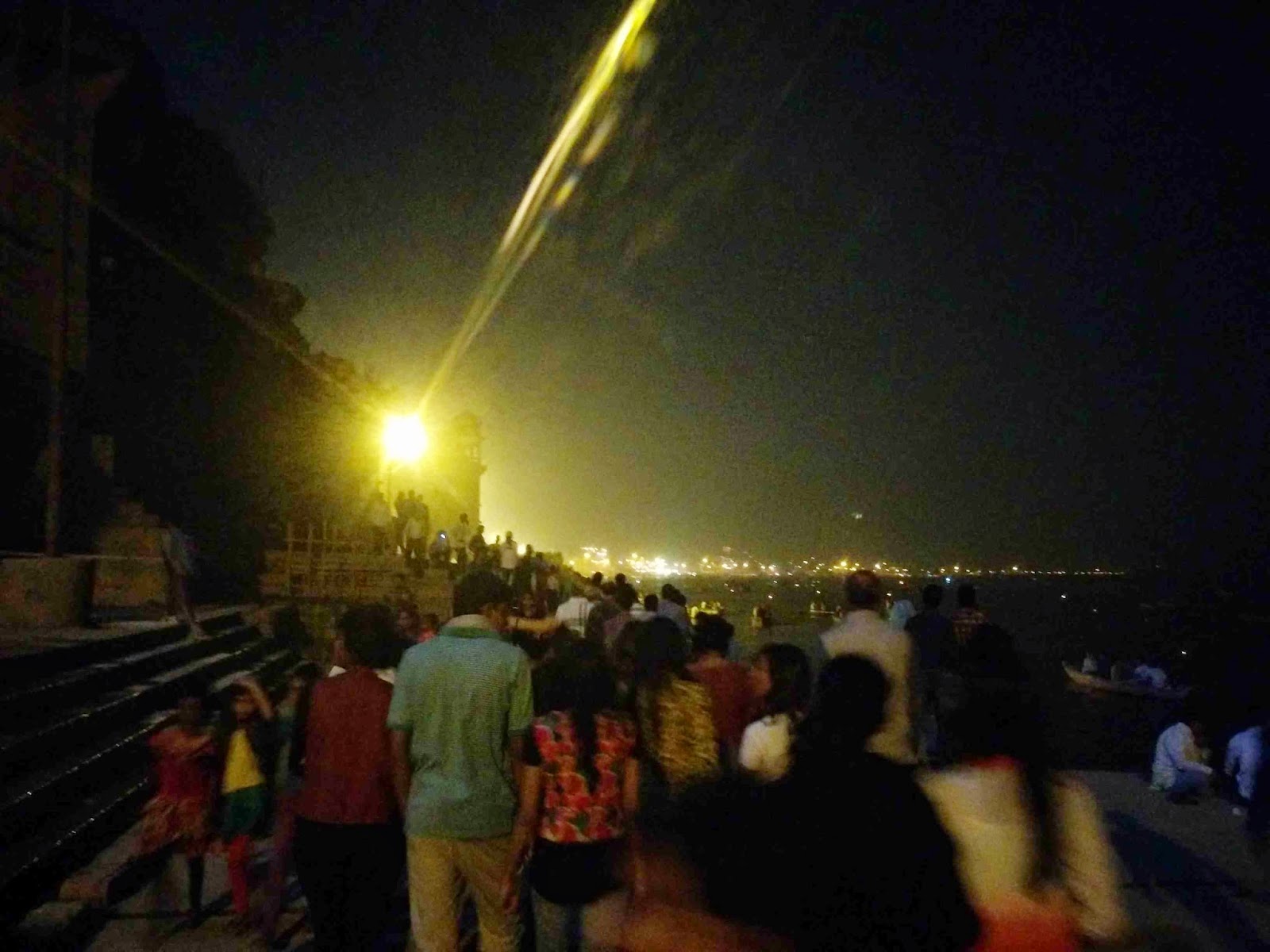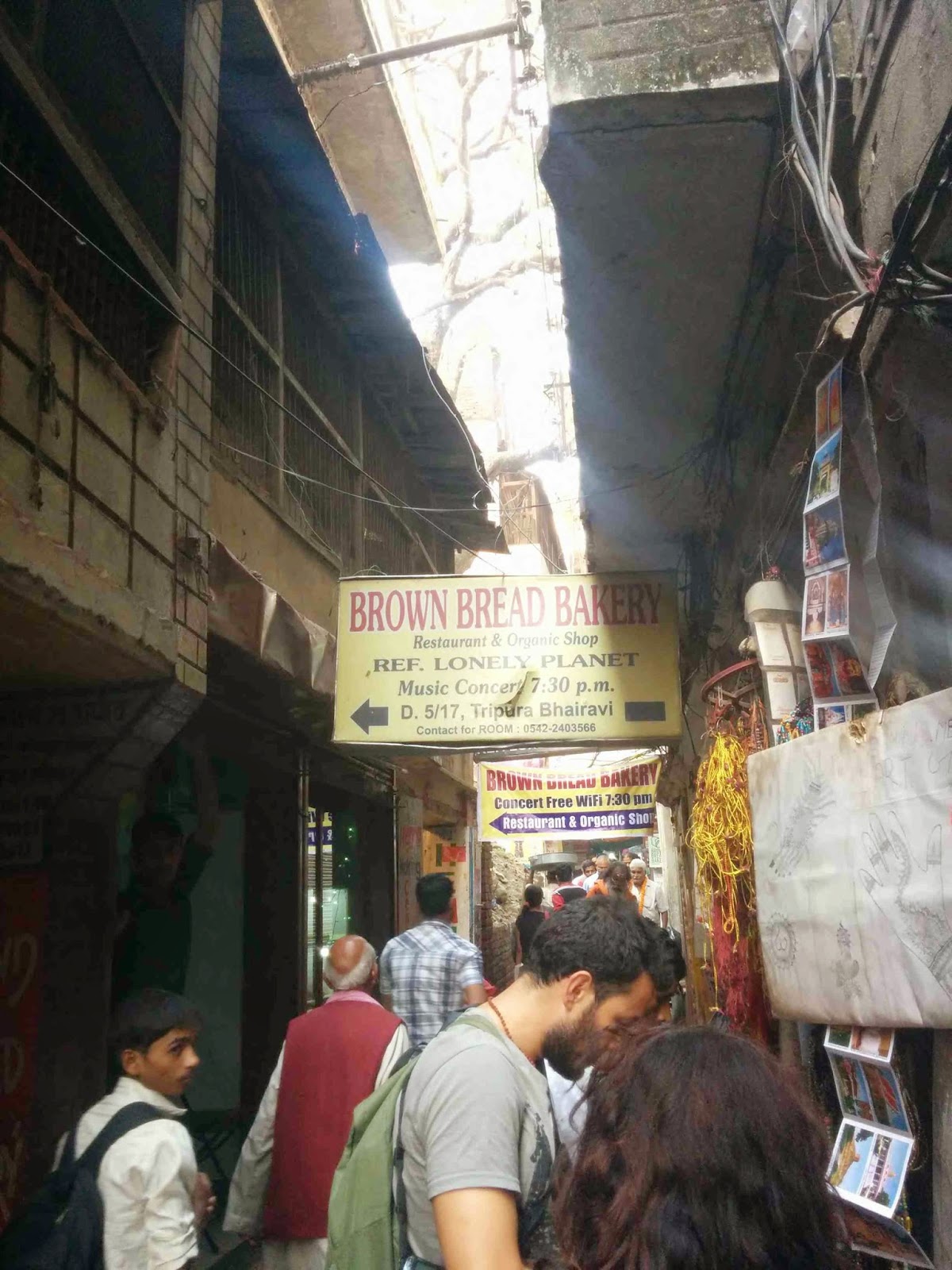I felt that the festival of
Deep Deepawali deserved an entry entirely to itself as it’s one of the
things that makes Varanasi, Varanasi. The entire festival of Deep Deepawali is
based around the slaying of the great demon Tripurasura by an incarnation of
Lord Shiva Tr. Tripurasura, it is said was the collective name of three demons,
Vidyunmali, Tarakaksha
and Viryavana, according to Hindu mythology.
It is said that Tripurasura
had conquered the entire world and defeated the gods, when an incarnation of Lord
Shiva, Tripurataka managed to slay the mighty demon the gods were overjoyed and
declared the day as a festival of illuminations. Hence, the festival is also
known as Dev-Diwali, the Diwali of gods.
We realized that during our
trip to Varanasi, we would be fortunate enough to witness the celebration of
this particular festival that brings an entire city, especially one as busy as
Varanasi to a complete stand still. When we visited the ghats on the day of the
festival it was a sight to see. I’ve never seen so many people in one place at
one time in my life, despite the fact that I’ve lived in one of the crowded
cities in India for close to fourteen years. The crowd was enormous and the
beauty of it all was that the entire night was lit up by the amount of tiny
lamps that decorated the steps of the ghats, close to every inch of the steps
were carpeted in tiny lamps. In one particular stretch of the ghats, there were
massive bowls of coal with fires burning in them. Fun fact, Deep Deepawali
always happens at the time of Kartik Poornima, which is fifteen days after
Diwali and occurs on the full moon in the month of Kartik.
It more than interesting to
see how so many people can gather in what is simply a thin stretch of land that
separates the streets from the river. What I found most unusual was that in all
these celebrations the pyres of Varanasi continued to burn. Perhaps what
surprised me was that through out all the merry-making, there were still a
couple of morose faces. Quite understandable, considering a couple of the
people at the ghats where they burn bodies were in mourning. It comes as quite
a shock to see people having fun right next to a place where they burn the
bodies of the dead. Perhaps it can be called insensitivity, that being said, the
ritual of burning bodies is close to
four thousand years old in Varanasi and I think it is only natural for
the people here to have become used to.
There are very specific parts
of the ghats where movement is heavily restricted thanks to the design of that
particular ghat. For example, near one of the ghats, the path becomes really
narrow. The thing is, this particular place is actually a key area, and leads
to some of the larger and more important ghats. As we were trying to get
through I noticed that there were close to eight people in a single line trying
to push their way through in the opposite direction, note that there are close
to a hundred and fifty people trying to move in one direction on a platform
that is quite literally only 3 meters across, at the most.
The ghats tend to get really
really crowded during this particular festival. Not a single ghat stays empty during
this time. You’ll see many people in some of the ghats that have more space
selling chat or selling cheap toys. In other ghats you’ll see people playing
cricket along a tiny strip of the ghats.
At this time of the year, on the full moon night, it feels like daytime.
The beauty of this festival is seeing how
everyone in the city comes together to celebrate this festival. Overall, the
point of being in such a place is not to try and explain the reason behind it
all but to rather soak it in and become immersed in it, take in the pI felt that the festival of
Deep Deepawali deserved a blog post entirely to itself as it’s one of the
things that makes Varanasi, Varanasi. The entire festival of Deep Deepawali is
based around the slaying of the great demon Tripurasura by an incarnation of
Lord Shiva Tr. Tripurasura, it is said was the collective name of three demons,
Vidyunmali, Tarakaksha
and Viryavana, according to Hindu mythology.
It is said that Tripurasura
had conquered the entire world and defeated the gods, when an incarnation of Lord
Shiva, Tripurataka managed to slay the mighty demon the gods were overjoyed and
declared the day as a festival of illuminations. Hence, the festival is also
known as Dev-Diwali, the Diwali of gods.
We realized that during our
trip to Varanasi, we would be fortunate enough to witness the celebration of
this particular festival that brings an entire city, especially one as busy as
Varanasi to a complete stand still. When we visited the ghats on the day of the
festival it was a sight to see. I’ve never seen so many people in one place at
one time in my life, despite the fact that I’ve lived in one of the crowded
cities in India for close to fourteen years. The crowd was enormous and the
beauty of it all was that the entire night was lit up by the amount of tiny
lamps that decorated the steps of the ghats, close to every inch of the steps
were carpeted in tiny lamps. In one particular stretch of the ghats, there were
massive bowls of coal with fires burning in them. Fun fact, Deep Deepawali
always happens at the time of Kartik Poornima, which is fifteen days after
Diwali and occurs on the full moon in the month of Kartik.
It more than interesting to
see how so many people can gather in what is simply a thin stretch of land that
separates the streets from the river. What I found most unusual was that in all
these celebrations the pyres of Varanasi continued to burn. Perhaps what
surprised me was that through out all the merry-making, there were still a
couple of morose faces. Quite understandable, considering a couple of the
people at the ghats where they burn bodies were in mourning. It comes as quite
a shock to see people having fun right next to a place where they burn the
bodies of the dead. Perhaps it can be called insensitivity, that being said, the
ritual of burning bodies is close to
four thousand years old in Varanasi and I think it is only natural for
the people here to have become used to.
There are very specific parts
of the ghats where movement is heavily restricted thanks to the design of that
particular ghat. For example, near one of the ghats, the path becomes really
narrow. The thing is, this particular place is actually a key area, and leads
to some of the larger and more important ghats. As we were trying to get
through I noticed that there were close to eight people in a single line trying
to push their way through in the opposite direction, note that there are close
to a hundred and fifty people trying to move in one direction on a platform
that is quite literally only 3 meters across, at the most.
The ghats tend to get really
really crowded during this particular festival. Not a single ghat stays empty during
this time. You’ll see many people in some of the ghats that have more space
selling chat or selling cheap toys. In other ghats you’ll see people playing
cricket along a tiny strip of the ghats.
At this time of the year, on the full moon night, it feels like daytime.
The beauty of this festival is seeing how
everyone in the city comes together to celebrate this festival. Overall, the
point of being in such a place is not to try and explain the reason behind it
all but to rather soak it in and become immersed in it, take in the place, live it and breathe it.








